How much does one spin cost in highvolatility slots: Calculating the "waiting price" of the bonus game
Highly volatile slots lure players with promises of big life-changing wins. However, this attractive feature hides the downside – long series of "empty" spins and significant drawdowns of the balance in anticipation of that very cherished bonus game or a large multiplier. In this article, we will delve into the mathematics of high-volatility slots to understand what the real "waiting price" of a bonus is and how this knowledge can help you manage your bankroll and gaming sessions. We'll analyse the results of a 10,000 spins simulation for 10 popular slots and offer an interactive calculator to estimate your individual 'burn rate'.
Content:
-
Who is suitable for highly volatile slots, and who should avoid them.
-
What to do to prevent dispersion from turning into a disaster
What are High Volatility Slots?

Before we get into the calculations, let's briefly define what volatility (or variance) is in the context of slot machines.
- Low volatility slots: Frequent but small wins. The bankroll is usually used up more slowly, but the chances of winning a very big jackpot are small.
- Medium Volatile Slots: A balanced option between the frequency and size of wins. Offer a good compromise for many players.
- High Volatility Slots (High Variance Slots / High Volatility Slots): Rare but potentially very large wins. It is in these slots that you can hit the jackpot or get a huge multiplier in the bonus game. However, such games require patience and a significant bankroll, as there can be long "dry" periods between wins. Cost per spin high volatility slots is not just a nominal bet, but rather a high-risk investment with high potential returns.
The main feature of highly volatile slots is the concentration of a significant part of the total RTP (Return to Player) in bonus features or rare high-paying combinations. This means that the base game (without bonuses) can have an RTP significantly lower than the stated total, and it is this difference that the player "pays" in anticipation of the bonus.
How and why we conducted the test
Almost every stream for slots is built around "hunts": the author opens a dozen or two high-volatility games, catches bonuses and launches them at the end. Each bonus game looks like a free ticket to the world of x1,000, but viewers rarely see the other side — empty spins, minus connections, and a burning balance. To translate emotions into numbers, we took ten hits with a reputation for "fiercely dispersion" — Dead or Alive 2, Mental, Money Train 4, Book of Fallen, Wanted Dead or a Wild, The Dog House Megaways, San Quentin, Razor Shark, Big Bamboo, and Chaos Crew 2 — and triggered exactly 10,000 autospins at the bet of $1 in each. The turbo was turned off, the bonus buy was cut off so as not to spoil the natural math. All outcomes are included in the log: full zero, partial return, plus spin and, of course, the moment the bonus is triggered. The output was 100,000 rows of data and a long enough distance to smooth out random spikes in each individual slot.
Slots on which we conducted experiments:
- Dead or Alive 2
- Mental
- Money Train 4
- Book of Fallen
- Wanted Dead or a Wild
- The Dog House Megaways
- San Quentin xWays
- Razor Shark
- Big Bamboo
- Chaos Crew 2
Analysis of the result:
We give the table only once — without it, the analysis will turn into fortune-telling on coffee grounds.
|
Slot |
Number of empty spins (out of 10,000) |
Number of negative spins (winning < bet, out of 10,000) |
Number of winning spins (winnings >= bets, not bonus, out of 10,000) |
Average number of spins before the bonus (estimate) |
Average amount spent before the bonus (at $1 bet, estimate) |
Total RTP of the slot (declared) |
Approximate RTP share in the bonus (estimate) |
|
Dead or Alive 2 |
6800 |
2000 |
1200 |
200-350 |
$120 - $230 |
96.82% |
60-70% |
|
Mental |
7500 |
1500 |
1000 |
350-550 |
$250 - $420 |
96.08% |
70-80% |
|
Money Train 4 |
7200 |
1800 |
1000 |
300-450 |
$200 - $350 |
96.10% |
70-75% |
|
Book of Fallen |
6500 |
2200 |
1300 |
150-250 |
$70 - $130 |
96.50% |
55-65% |
|
Wanted Dead or a Wild |
7800 |
1400 |
800 |
250-400 (for various bonuses) |
$160 - $280 |
96.38% |
65-75% |
|
The Dog House Megaways |
7000 |
1800 |
1200 |
200-350 |
$110 - $210 |
96.55% |
60-70% |
|
San Quentin xWays |
7000 |
2000 |
1000 |
400-700+ (for Lockdown Spins) |
$300 - $550+ |
96.03% |
75-85% |
|
Razor Shark |
7300 |
1600 |
1100 |
220-380 |
$140 - $260 |
96.70% (but may be lower) |
65-75% |
|
Big Bamboo |
7000 |
1800 |
1200 |
180-300 |
$100 - $190 |
96.13% |
60-70% |
|
Chaos Crew 2 |
7700 |
1300 |
1000 |
280-420 |
$190 - $320 |
96.27% |
70-75% |
The column "Average amount spent before the bonus" shows the same check for the right to click the "Start Feature" button: we took the total expenses, subtracted all intermediate winnings and divided by the number of bonuses. The indicator ranges from $101 (The Dog House Megaways turned out to be the most humane) to $550 for San Quentin. The average "ticket price" for all games is about $250-300 at a bet of one euro.
Don't like it? But we tested this in good casinos, with a high RTP and a transparent reputation. If you take into account dubious places, the price can be multiplied by x2 or more.
Linked materials
What Do These Numbers Tell the Average Player

The most important line is not at all about the size of the bonus payment, but about the share of empty spins. On average, eight spins out of ten simply swallow the bet without the slightest consolation symbol. Another twenty percent return the change—fifty cents, thirty or ninety—creating the illusion that "something is dripping." But the fact remains: the rake machine consistently takes money until the random number generator decides to be generous.
Now let's transfer the numbers to a real-life example. Let's say you come home after work, charge your balance for $100 and open Wanted Dead or a Wild. Statistics say: with a probability of more than 60%, your deposit will burn to zero before the VS inscription appears. If you find yourself in the lucky third, you will receive a bonus that, according to the average temperature in the hospital, will return about the same three hundred minus, only with one one-time hit. The next feature will still have to be pressed to the "plus". That is why streamers often buy bonuses directly: it is simply cheaper than scrolling through the database.
Linked materials
Who needs such a variance at all?
Highvolatility is not a genre about "playing the evening", but about explosive drifts and content for the sake of highlights. If for you the game is entertainment for a specific amount, after which you calmly go to bed, the variance of 3040 percent of the balance per hundred spins looks excessive. But there is an audience for whom such a risk is suitable:
- Streamers and bloggers. One x1000 screenshot pays off ten failed broadcasts in terms of views.
- Achievement hunters. There is a category of fans who collect maximum symbols or "closed" lines in Dead or Alive 2.
- Players with a large deposit. With a deposit of $1,000, a drawdown of $300 before the bonus no longer seems like a disaster, especially if the emotions are worth the money.
- Players who are ready to take risks and put everything on the line.
High volatility slots are RIGHT for you if:
- You have a sufficient deposit: You can afford to lose an amount equivalent to several "average minuses before the bonus" (for example, $500-$1000+ for slots from the table) without catastrophic consequences, in anticipation of a big win.
- You're patient: You're prepared for the fact that 8000 out of 10000 spins will either be empty or bring a win of less than the bet, as the data shows.
- Your goal is to win big: You play not so much for fun and frequent small wins, but in pursuit of a really big jackpot that can exceed your stake many times over.
- You understand the risks: You are aware that you can lose the entire bankroll allocated for the session without waiting for the bonus game that will pay off the costs.
- You love thrills: The adrenaline of anticipation and a potentially huge payout is more important to you than a calm, measured game.
High volatility slots are most likely NOT SUITABLE for you if:
- You have a limited bankroll: If the "average minus before the bonus" of $200-$400 is a significant part of your gambling budget.
- You prefer frequent wins: Data shows that there are very few winning spins that exceed the bet (not bonus).
- You play mainly for fun and to extend your playing time: High volatility can quickly eat into your bankroll, reducing your playing time.
- You're prone to tilting: Long losing streaks confirmed by data (thousands of empty and negative spins) can provoke you to raise your bets.
- You're not ready for significant balance drawdowns: Seeing your balance shrink rapidly is unacceptable to you.
The key factor is the ratio between your deposit, the size of the bet and the "waiting price" of the bonus in a particular slot. If the "average minus to bonus" for a slot is $300 and your deposit is $100, then it is mathematically extremely unlikely to wait for the bonus, unless you are lucky with its early drawing.
Linked materials
What to do to prevent dispersion from turning into a disaster
First, take highvol slots like a lottery: the balance goes out abruptly and without warning. Secondly, fix the loss limit before the start. If the math says "the bonus costs $300" and you have $100 in your account, accept the reality – the probability of slipping to the feature to zero is less than half. Thirdly, do not raise the bet until you have seen the bonus: a double bet will kill the stock of spins twice as fast, but will not add chances for a trigger. And, finally, use cooloff and realitycheck — they were invented specifically for such long deserts.
Inference
The test confirmed what many people feel intuitively: you have to pay a serious price for the right to play a bonus in a "bad" slot. On average, there are three hundred bets, often more. If you come for a "Sunday twist", it is better to choose medium volatility: the winnings are smaller, but the bankroll lives longer. If you like explosive hits and are ready to take risks, now you know how much the entrance ticket really costs.
The next sleepless night in Mental will not take you by surprise: open the table, enter your pot and bet, look at the cold numbers and decide if you are ready to pay for a chance of x10,000. Play responsibly and remember: the slot does not owe anything to anyone, even if you "have already poured 290 euros and definitely have to fight back".




FlameKiller1 Cool selection! Thanks to the author, I was just looking for something to ride on the weekend.

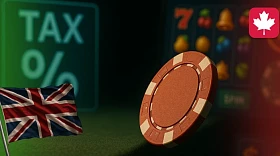

Hellworkers So much for "consumer care". As soon as they are strangled with taxes, everyone will really go to left-wing offices.








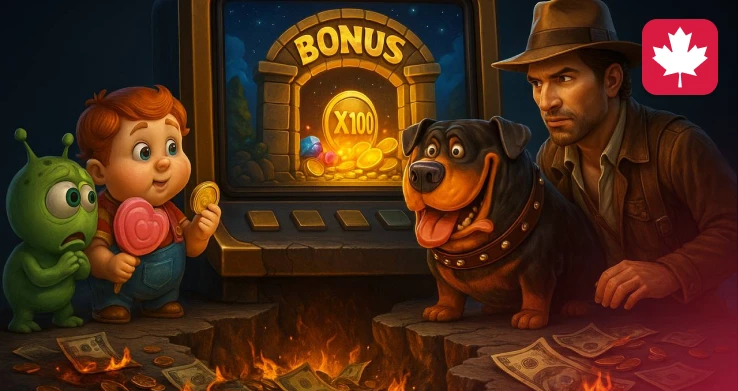









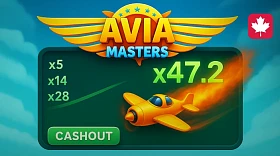




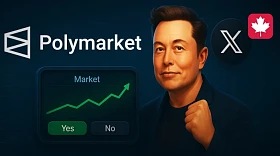

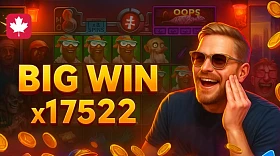
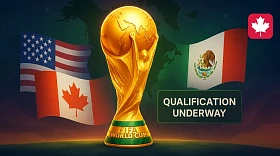


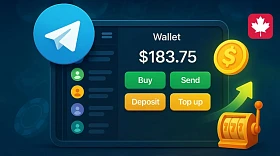



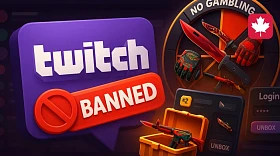
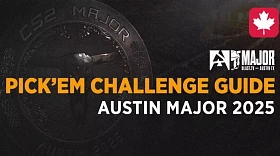














That nonsense
After this article, I realized one simple thing: I'm a fucker. Because I still thought that the slot "should give" if I had already poured a lot...
Razor Shark gave me a bonus on the 3rd spin. x420. That's it, now I believe in fate.
This is purely the bread of streamers. A thousand spins in the minus, then one beautiful drift - and a bunch of donations from the audience. Content rules, not profits.
Why do people play such a game at all? There are normal fruit machines where at least some pennies are dripping.
Poor guy who tested it. How much do you pay him?xD